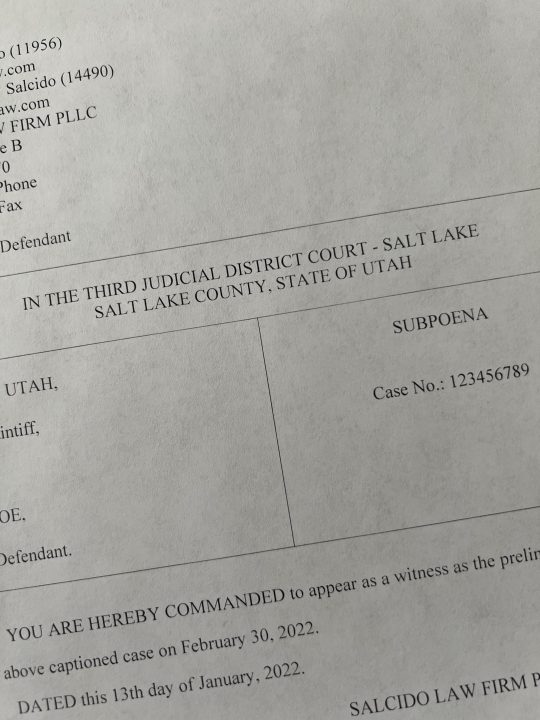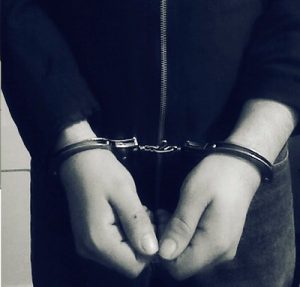Signal for at least two seconds before changing lanes or get arrested.

Romeo Lucero Olivarez activated his turn signal on an Interstate 15 exit ramp and in one motion moved across two lanes of traffic, but he didn’t signal for at least two seconds before moving to each lane. Specifically, he moved from lane two, across lane three, and into lane four. An officer in an unmarked patrol car stopped Mr. Olivarez for going across “all the traffic without leaving the appropriate two second signal.” After telling Mr. Olivarez why he was stopped, the officer asked for his driver’s license, registration, and proof of insurance. Mr. Olivarez told the officer he did not have his license with him and then later said his license might be suspended. The officer found out that his license was actually denied and the vehicle was registered to someone else. Accordingly, the officer told Mr. Olivarez that he was going to impound the car. Mr. Olivarez said the car belonged to his brother, so the officer said he could call his brother to come get the car once he was out of the vehicle so the officer could begin the impound.
Mr. Olivarez exited the car, and the officer asked if he was carrying any weapons. He told the officer that he was carrying brass knuckles in his pocket, and he consented to a search of his person. The officer conducted the search, found the brass knuckles, and arrested Mr. Olivarez for carrying a concealed dangerous weapon. More officers arrived at the scene and conducted an inventory search of the car. The officers found methamphetamine, heroin, marijuana, and a glass pipe. A tow truck then arrived and hooked up the car. The registered owner also arrived to pick up the car, but the officer did not allow him since the impound was almost complete. The district court denied Mr. Olivarez’s motion to suppress evidence, and he entered a conditional guilty plea to possession of methamphetamine and heroin, while reserving his right to appeal.
The Court of Appeals of Utah decided that the officer had reasonable suspicion that Mr. Olivarez violated the law when failed to signal for two seconds prior to moving from lane three to lane four. A traffic stop for a suspected violation of law is a seizure of the occupants of the vehicle and must be conducted in accordance with the Fourth Amendment. Police officers are justified in making traffic stops if they have reasonable suspicion, which is a particularized and objective basis for suspecting the particular person stopped of breaking the law. The court then looked to section 41-6a-804 of the Utah Code, which provides, “A person may not turn a vehicle or move right or left on a roadway or change lanes until: (i) the movement can be made with reasonable safety; and (ii) an appropriate signal has been given as provided under this section. An appropriate signal is: “A signal of intention to turn right or left or to change lanes shall be given continuously for at least the last two seconds preceding the beginning of the movement. A “movement” in the context of the statute means a single lane change. The court explained that once Mr. Olivarez moved from lane two to lane three, he changed lanes and was then required to signal for another two seconds if he desired to change lanes again. Thus, the stop was reasonable under the Fourth Amendment.
Next, the court concluded that the officer’s decision to impound the car and conduct an inventory search did not exceed constitutional limitations. The Fourth Amendment prohibits unreasonable searches, and in order for a search to be constitutionally permissible, a search warrant issued by a neutral magistrate and based on probable cause is required. An exception to the general warrant requirement is for an inventory search of an impounded vehicle. Impounding a vehicle is constitutional only when there is reasonable and proper justification to impound the vehicle either through explicit statutory authorization or by the circumstances surrounding the initial stop. In Mr. Olivarez’s case, he was lawfully stopped, was driving without a valid license, was the only person with the car, and was not the car’s registered owner. The impound protected the absent owner’s property and protected the police from liability; thus, the officer’s decision to impound the car was a reasonable and proper justification under the circumstances.




